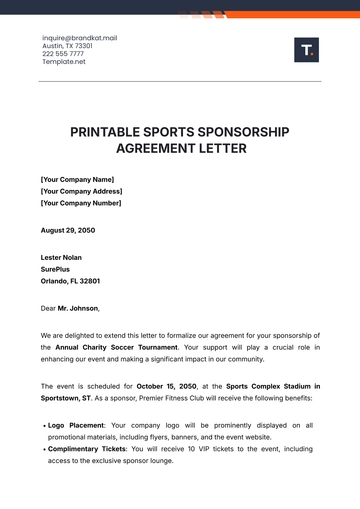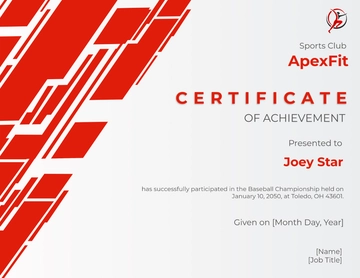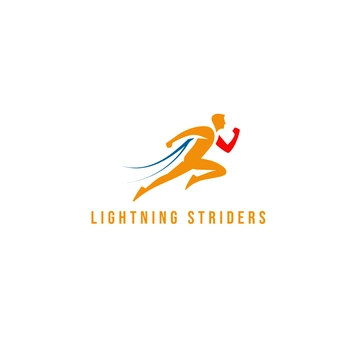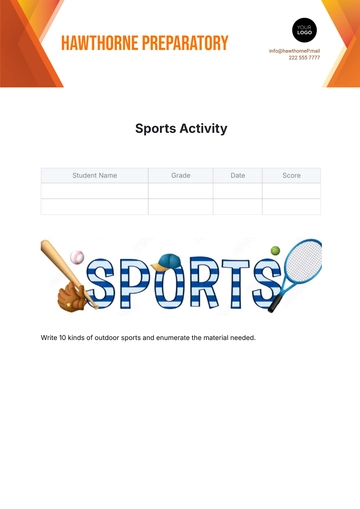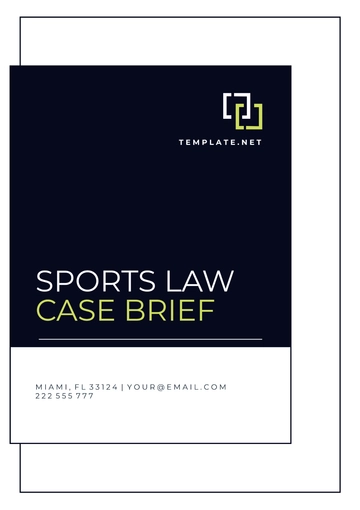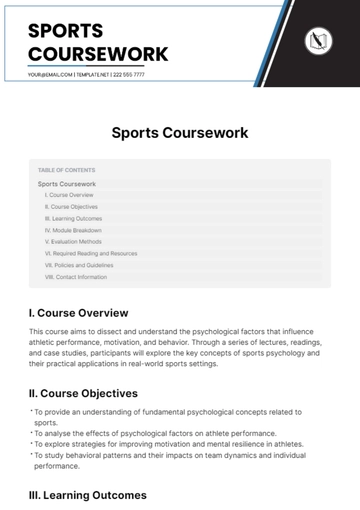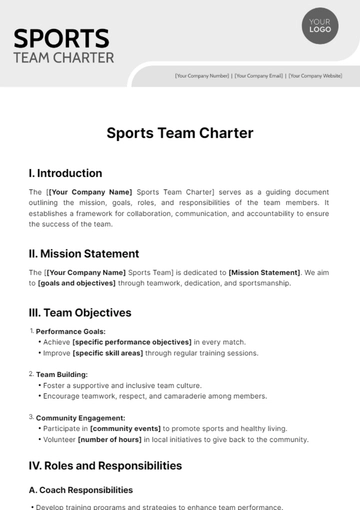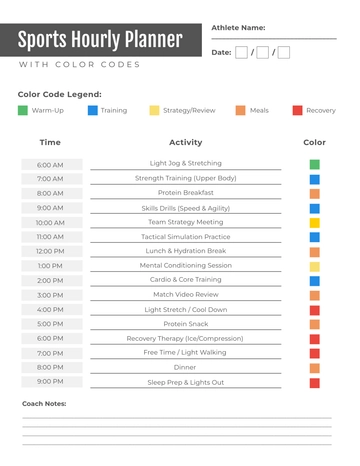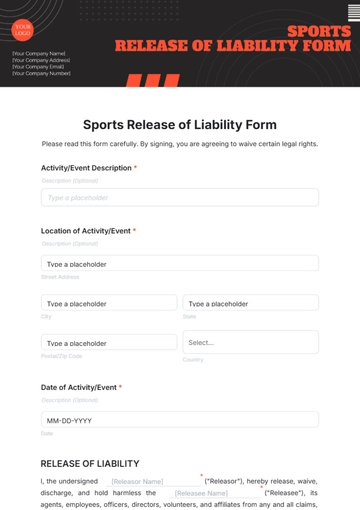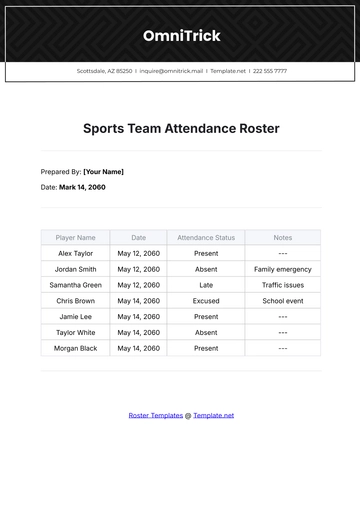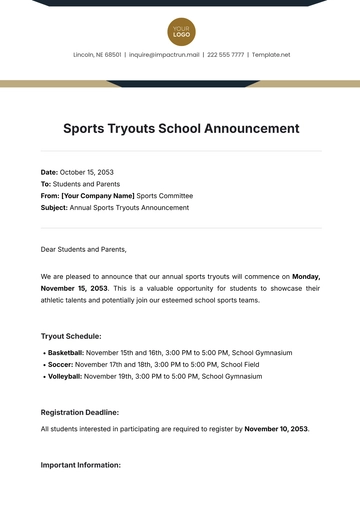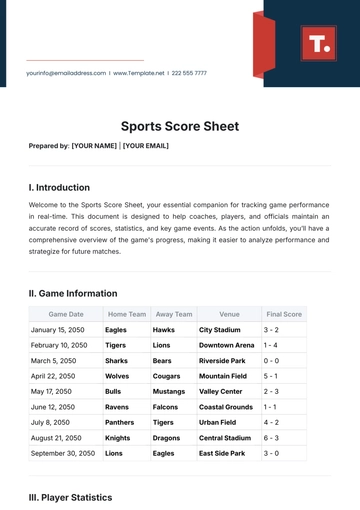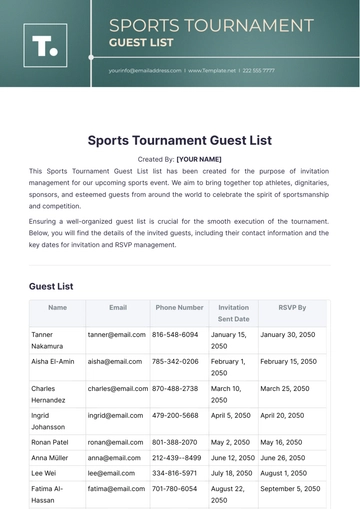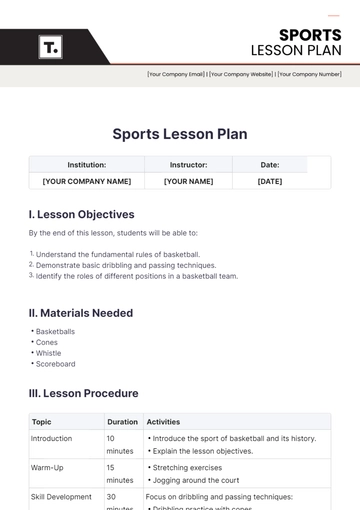Free Goal Results
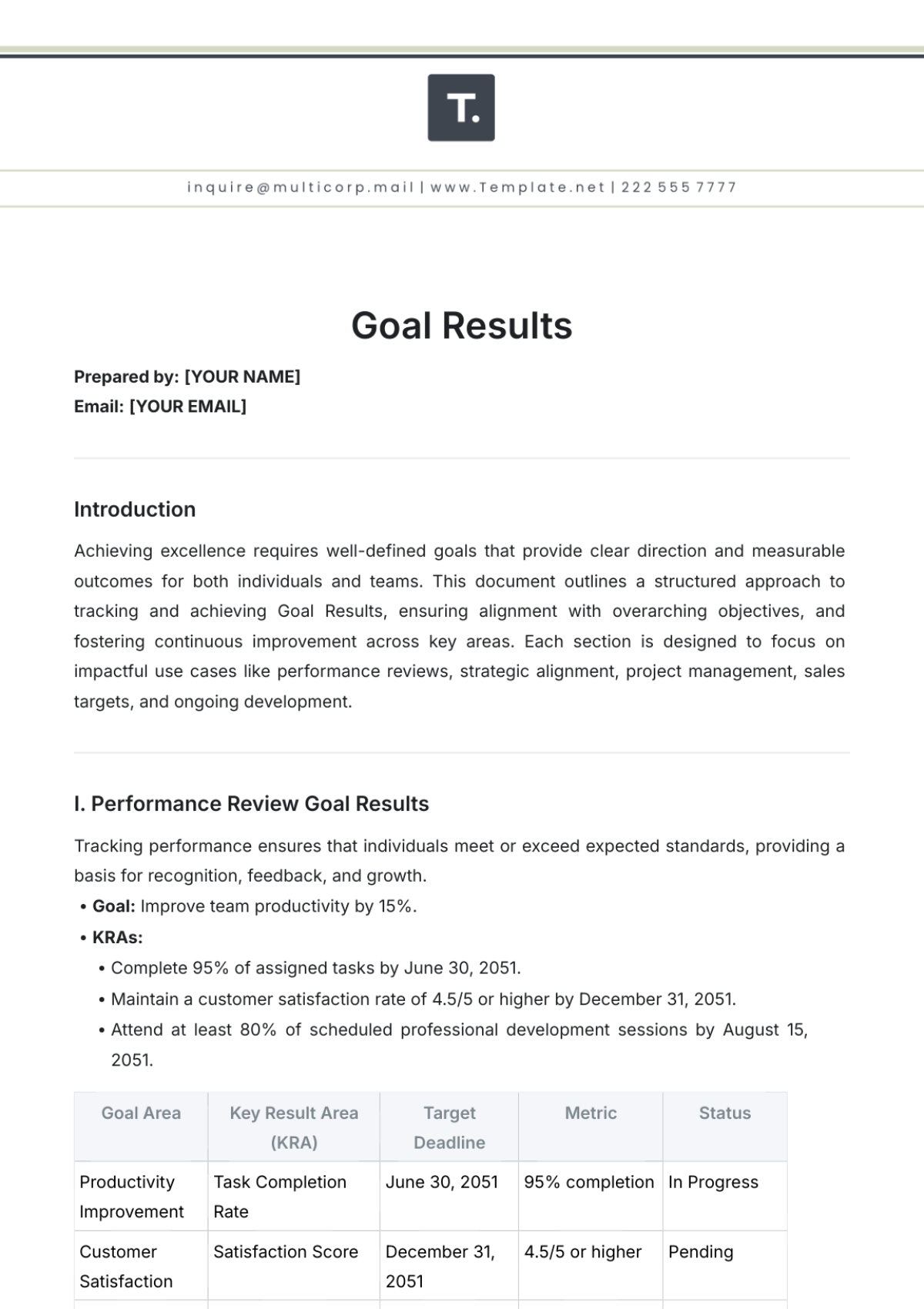
Prepared by: [YOUR NAME]
Email: [YOUR EMAIL]
Introduction
Achieving excellence requires well-defined goals that provide clear direction and measurable outcomes for both individuals and teams. This document outlines a structured approach to tracking and achieving Goal Results, ensuring alignment with overarching objectives, and fostering continuous improvement across key areas. Each section is designed to focus on impactful use cases like performance reviews, strategic alignment, project management, sales targets, and ongoing development.
I. Performance Review Goal Results
Tracking performance ensures that individuals meet or exceed expected standards, providing a basis for recognition, feedback, and growth.
Goal: Improve team productivity by 15%.
KRAs:
Complete 95% of assigned tasks by June 30, 2051.
Maintain a customer satisfaction rate of 4.5/5 or higher by December 31, 2051.
Attend at least 80% of scheduled professional development sessions by August 15, 2051.
Goal Area | Key Result Area (KRA) | Target Deadline | Metric | Status |
|---|---|---|---|---|
Productivity Improvement | Task Completion Rate | June 30, 2051 | 95% completion | In Progress |
Customer Satisfaction | Satisfaction Score | December 31, 2051 | 4.5/5 or higher | Pending |
Professional Development | Training Attendance | August 15, 2051 | 80% attendance | Scheduled |
II. Strategic Alignment Goal Results
Strategic alignment ensures that individual and departmental objectives support company-wide initiatives, contributing to long-term success.
Goal: Align 80% of department goals with corporate strategic objectives by February 1, 2052.
KRAs:
Ensure each department completes its strategic review process by January 15, 2052.
Finalize goal alignment workshops by March 1, 2052.
III. Project Management Goal Results
Effective project management relies on specific, measurable objectives that guide each phase to ensure timely delivery and quality.
Goal: Achieve a 90% on-time project delivery rate by December 1, 2051.
KRAs:
Complete Phase 1 of the project by July 15, 2051.
Finalize Phase 2 by September 30, 2051.
Conclude final deliverables by November 15, 2051.
Project Phase | Objective | Target Deadline | Completion Rate | Status |
|---|---|---|---|---|
Phase 1 | Initial Planning and Design | July 15, 2051 | 100% | Completed |
Phase 2 | Development and Testing | September 30, 2051 | 80% | In Progress |
Final Phase | Project Deployment | November 15, 2051 | 90% | On Track |
IV. Sales Targets Goal Results
Clear sales goals drive revenue growth, encouraging teams to achieve results that directly impact the company’s financial health.
Goal: Increase total revenue by 25% by December 31, 2051.
KRAs:
Acquire 50 new clients by September 30, 2051.
Maintain an average deal size of $15,000 by November 30, 2051.
Enhance cross-selling efforts to increase repeat customer rate by 20% by October 15, 2051.
V. Continuous Improvement Goal Results
Continuous improvement initiatives ensure that the organization remains adaptable and proactive, setting the stage for long-term success.
Goal: Implement two new process improvements by April 1, 2052.
KRAs:
Identify process improvement areas by February 15, 2052.
Test and validate new processes by March 15, 2052.
Document changes and integrate into standard practices by March 31, 2052.
Conclusion
Through these Goal Results, [YOUR COMPANY NAME] is committed to fostering accountability, driving growth, and achieving exceptional standards across departments. By adhering to these clear objectives, our teams and leaders are empowered to contribute meaningfully to our mission and ensure sustained progress.
- 100% Customizable, free editor
- Access 1 Million+ Templates, photo’s & graphics
- Download or share as a template
- Click and replace photos, graphics, text, backgrounds
- Resize, crop, AI write & more
- Access advanced editor
Achieve your objectives effortlessly with Template.net's Goal Results Template. This customizable and editable template empowers you to set, track, and analyze your goals effectively. Featuring an intuitive AI Editor Tool, you can easily modify your goals and monitor progress, ensuring you stay on track for success. Perfect for individuals and teams alike.

